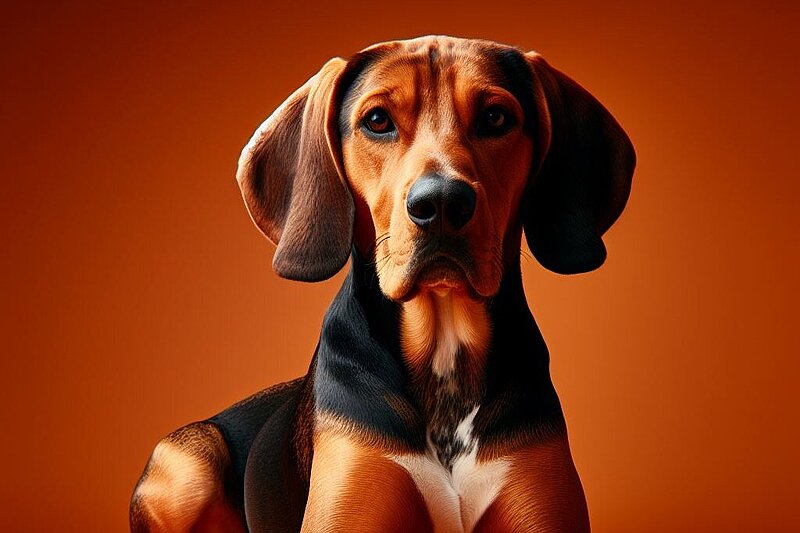The Jura hound: The elegant hunter from Switzerland
The history of the Jura hound
The Jura hound, also known as the Swiss hound, has a long and impressive history. Originally from the Jura Mountains in Switzerland, this breed was bred specifically for hunting wild boar and deer. Its roots go back to the Middle Ages, where it was prized by hunters for its excellent nose and stamina. The Jura hound is one of the four varieties of the Swiss hound and was first officially recognized in the 19th century.
Who is the Jura hound suitable for?
The Jura hound is ideal for active people who spend a lot of time outdoors and enjoy hunting or dog sports. This dog breed needs a lot of exercise and mental exercise, which is why it is less suitable for people who are looking for a quiet companion dog. Families with large gardens or rural homes offer the Jura hound an ideal environment.
Character and temperament
The Jura hound is known for its lively and friendly nature. It is intelligent, eager to learn and has a strong hunting instinct. His loyalty to his owners makes him a reliable companion. Despite its friendly nature, it can sometimes be headstrong, which is why consistent training is important.
Appearance of the Jura hound
With its slender, muscular build and long, drooping ears, the Jura Hound radiates elegance and strength. Its short, dense coat is mostly black with tan markings. It has clear, dark eyes that lend its expression a certain gentleness.
Grooming the Jura hound
Grooming the Jura Hound is relatively uncomplicated. Its short coat should be brushed regularly to remove dead hair and promote skin health. The ears need to be checked and cleaned weekly to prevent infection. As with all dogs, regular dental care is important to prevent tartar build-up.
Health of the Jura hound
The Jura hound is considered a robust and healthy breed. With a life expectancy of 12 to 14 years, these dogs generally enjoy good health. However, there are some typical breed diseases that should be watched out for, such as hip dysplasia and ear infections.
Size and weight
Males of the Jura Hound reach a shoulder height of 47 to 59 cm, while females are slightly smaller. The weight varies according to sex and is between 18 and 28 kg.
Exercise requirements and habitat
This dog breed needs a lot of exercise and is therefore less suitable for city life. Daily long walks and sufficient free running in safe terrain are essential. The Jura hound feels most at home in rural areas or in households with large gardens.
Training recommendations
Early and consistent training is crucial for the Jura hound. Due to its hunting instinct, the recall should be well trained. Positive reinforcement and varied training sessions help to gain his attention and cooperation. Dog sports such as agility or tracking are ideal to keep him physically and mentally active.
Grooming tips in detail
In addition to regular grooming, it is important to keep your Jura running dog's nails short, especially if it mainly runs on soft surfaces. Dental care should also not be neglected. Regular visits to the vet are essential to monitor their general health.
Behavior and interactions
The Jura Hound is friendly and social, which makes it a good family dog. He gets along well with children and other dogs, provided he has been properly socialized. However, its hunting instinct can be a problem if small pets live in the household.
Recognition by the FCI
Yes, the Jura hound is recognized by the Fédération Cynologique Internationale (FCI) and belongs to Group 6, Section 1.2: Medium-sized hounds.
